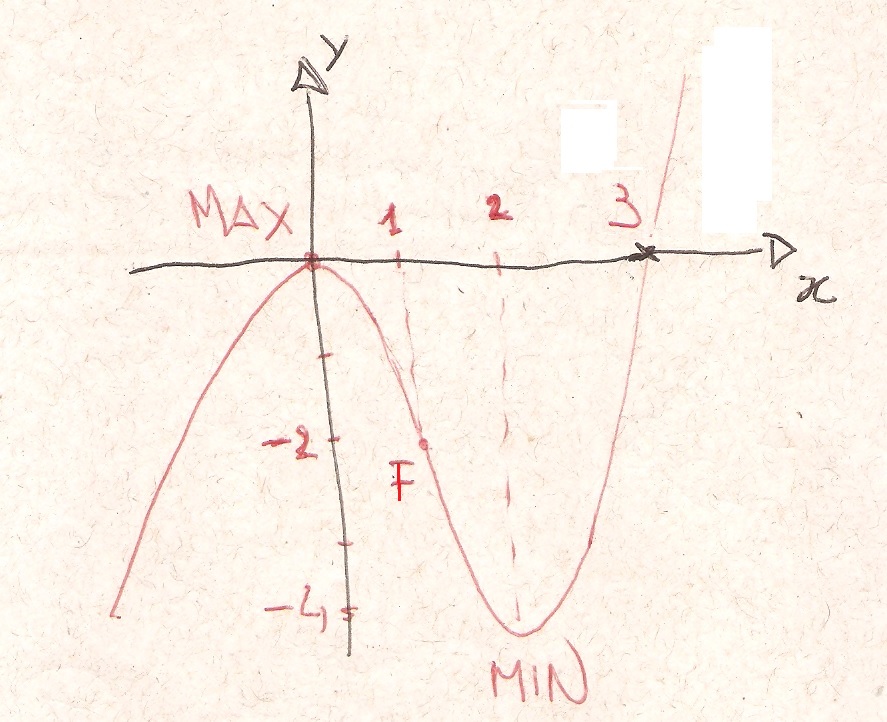How do you sketch the graph of #f(x)=x^3-3x^2#?
2 Answers
Calculate derivative :
So you can study the sign of
#f'(x) < 0 iff x in ]0,2[# #f'(x) > 0 iff x in ]-oo, 0[ cup ]2,+oo[# .
You get now the variations of
-
-
Remark that
- local maximum in 0 with
- local minimum in 2 with
There are two horizontal tangents at 0 and at 2.
- For the limits, apply the rule :
#lim_{x->-oo} x^3-3x^2 = lim_{x->-oo} x^3 = -oo#
#lim_{x->+oo} x^3-3x^2 = lim_{x->+oo} x^3 = +oo#
Finally :
graph{x^3 - 3x^2 [-8.42, 13.78, -6.62, 4.48]}
You can start by setting
Setting
When
Points of maximum or minimum are found by setting the first derivative equal to zero:
and
and
When
Setting the second derivative equal to zero will give us inflection point(s):
and
so that
And finally:



